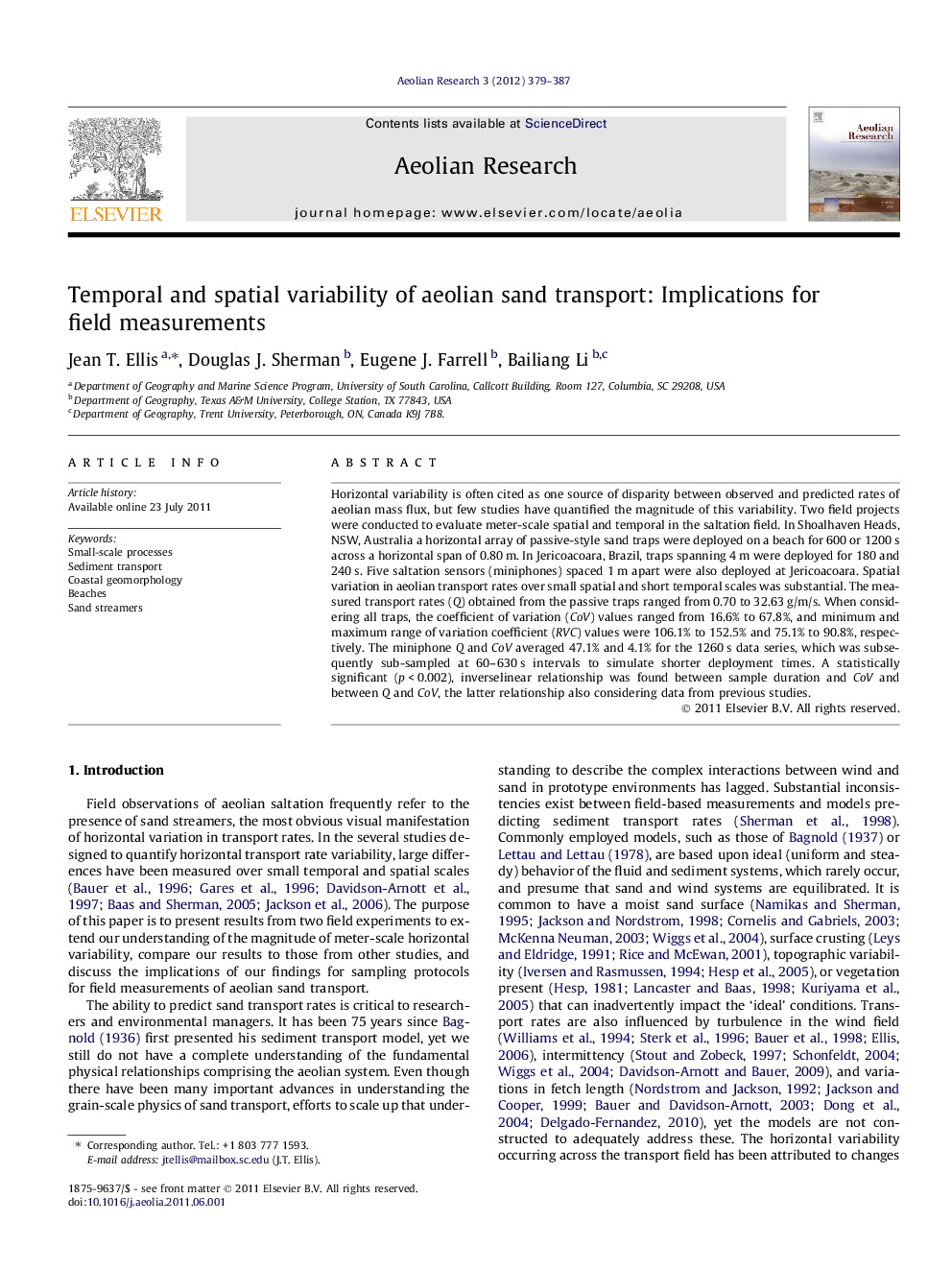| Article ID | Journal | Published Year | Pages | File Type |
|---|---|---|---|---|
| 4673932 | Aeolian Research | 2012 | 9 Pages |
Horizontal variability is often cited as one source of disparity between observed and predicted rates of aeolian mass flux, but few studies have quantified the magnitude of this variability. Two field projects were conducted to evaluate meter-scale spatial and temporal in the saltation field. In Shoalhaven Heads, NSW, Australia a horizontal array of passive-style sand traps were deployed on a beach for 600 or 1200 s across a horizontal span of 0.80 m. In Jericoacoara, Brazil, traps spanning 4 m were deployed for 180 and 240 s. Five saltation sensors (miniphones) spaced 1 m apart were also deployed at Jericoacoara. Spatial variation in aeolian transport rates over small spatial and short temporal scales was substantial. The measured transport rates (Q) obtained from the passive traps ranged from 0.70 to 32.63 g/m/s. When considering all traps, the coefficient of variation (CoV) values ranged from 16.6% to 67.8%, and minimum and maximum range of variation coefficient (RVC) values were 106.1% to 152.5% and 75.1% to 90.8%, respectively. The miniphone Q and CoV averaged 47.1% and 4.1% for the 1260 s data series, which was subsequently sub-sampled at 60–630 s intervals to simulate shorter deployment times. A statistically significant (p < 0.002), inverselinear relationship was found between sample duration and CoV and between Q and CoV, the latter relationship also considering data from previous studies.
► Meter-scale horizontal variability of aeolian transport on beaches is substantial. ► As sand transport rate increases, horizontal variability decreases. ► As the duration of sampling increases, horizontal variability decreases. ► Degree of spatial variability of transport should be considered in experimental design.
